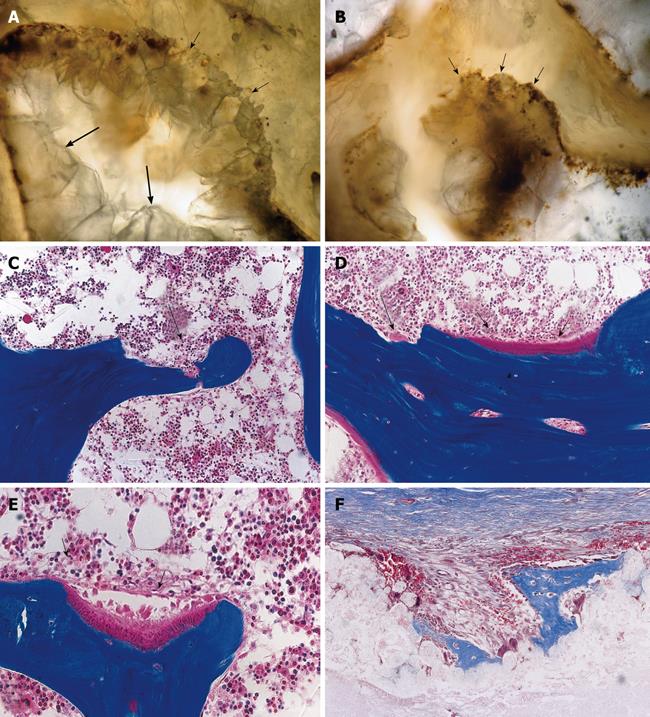Copyright
©2010 Baishideng Publishing Group Co.
World J Biol Chem. May 26, 2010; 1(5): 109-132
Published online May 26, 2010. doi: 10.4331/wjbc.v1.i5.109
Published online May 26, 2010. doi: 10.4331/wjbc.v1.i5.109
Figure 13 Biomimetism of the remodeling cortico-cancellous unit of the primate osteonic bone with the induction of bone formation by the concavities assembled in macroporous calcium phosphate-based biomimetic matrices.
A, B: Remodeling cycles of osteoclastic activity with pits, lacunae and concavities (short arrows) cut by osteoclastogenesis as seen in fossilized skeletal remains of Australopithecus africanus, the man-ape of Southern Africa[8]. Long arrows indicate crystal of calcium phosphate accumulated during fossilization in highly calcareous and wet environments (Grounded/polished sections by van den Heever B); C-E: Osteoclastogenesis cut pits and lacunae ultimately in the form of concavities in extant P. ursinus species (long arrows). Concavities cut by osteoclastogenesis are then filled with newly formed bone (formation phase of the remodeling cycle) with significant synthesis of osteoid matrix (D, E), short arrows in D and E point to newly formed osteoid seams within the concavities after osteoclastogenesis; F: Limited resorption/dissolution of a biphasic hydroxyapatite/tricalcium phosphate matrix initiates the induction of bone formation. C-E: Undecalcified sections cut at 6 μm stained with Goldner’s trichrome; F: Decalcified section cut at 6 μm.
- Citation: Ripamonti U. Soluble and insoluble signals sculpt osteogenesis in angiogenesis. World J Biol Chem 2010; 1(5): 109-132
- URL: https://www.wjgnet.com/1949-8454/full/v1/i5/109.htm
- DOI: https://dx.doi.org/10.4331/wjbc.v1.i5.109









